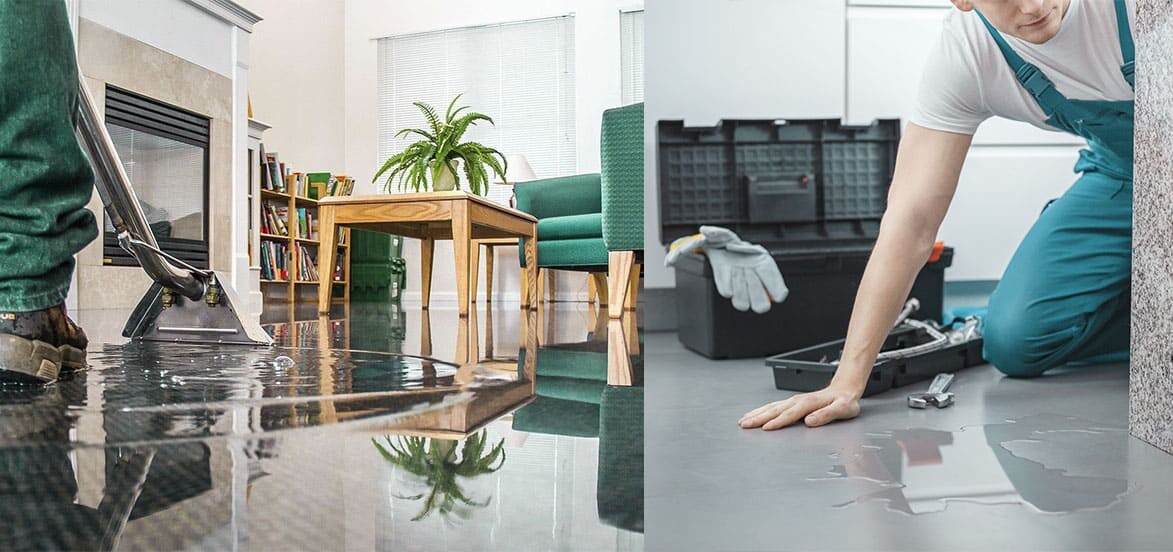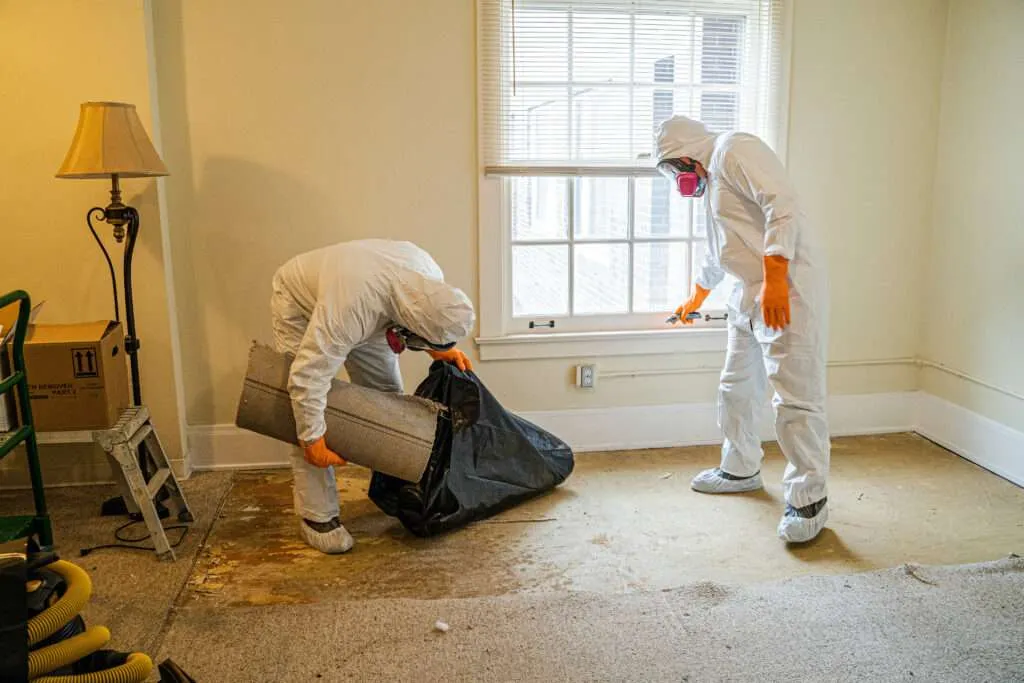Why Water Damage Restoration critical when water strikes?
Wiki Article
Water Damage Restoration 101: Understanding the Process and Price
Water damage can strike suddenly, leaving homeowners in a state of complication. Comprehending the remediation process is necessary for efficient healing. From examining the damage to selecting the appropriate provider, each step impacts the total outcome and price. Factors such as the kind of water damage and necessity likewise play a substantial duty. What are the specific strategies made use of in reconstruction, and exactly how can one prepare for potential costs?Kinds Of Water Damage

First Assessment and Examination

Water Removal Methods
Complying with the preliminary evaluation, efficient water extraction techniques are employed to reduce damage and prevent additional concerns. These strategies include making use of customized tools such as industrial-grade vacuum cleaners and completely submersible pumps - Water Damage Restoration. The selection of method depends on the volume of water existing and the kind of products impacted. For standing water, completely submersible pumps are usually used for quick elimination, while vacuums are excellent for removing water from carpetings and upholstery. Furthermore, progressed approaches like water removal mats may be used for hard-to-reach locations - Flood Cleanup Services. The objective is to remove as much water as feasible, minimizing the potential for mold and mildew development and architectural damage. Motivate and effective water removal is essential in the overall water damage restoration procedureDrying Out and Dehumidification Process
As soon as the water extraction is full, the drying out and dehumidification process becomes vital to restoring the damaged area. This phase commonly uses industrial-grade dehumidifiers and air movers to successfully reduce wetness degrees. The dehumidifiers reel in moist air, removing excess moisture, while air moving companies distribute air to speed up dissipation. Monitoring equipment is commonly utilized to track moisture and temperature level levels, ensuring suitable drying conditions. The period of this procedure can differ depending upon the extent of the water damage and environmental factors. It is necessary to completely dry all impacted products, including wall surfaces, floor covering, and furnishings, to avoid mold growth and architectural damage. Correct implementation of this step is critical for a successful remediation end result.Cleaning Up and Sanitizing Affected Areas
A comprehensive initial analysis and assessment of influenced locations is crucial to recognize contamination levels as soon as the drying process is full. Water Damage Restoration. Reliable cleansing methods and proper products need to then be employed to remove particles and discolorations. Ultimately, sanitization and disinfection techniques are crucial to guarantee that damaging virus are gotten rid of, bring back the room to a risk-free conditionPreliminary Analysis and Inspection
Prior to starting any kind of restoration initiatives, an extensive initial evaluation and evaluation of the affected areas are crucial for efficient cleaning and sanitizing. This process includes identifying the level of water damage, figuring out the source of the water intrusion, and evaluating the products impacted. Examiners commonly seek indicators of mold growth, structural honesty concerns, and harmed items. The evaluation also consists of inspecting moisture degrees making use of customized tools to ensure no covert water pockets remain, as these can bring about further difficulties. Documenting the findings is important for preparing the next action in the reconstruction procedure. A detailed first assessment enables restoration experts to devise a targeted approach for reliable cleaning and sanitizing, ultimately lessening damage and wellness threats.Cleaning Methods and Products
Efficient cleaning and disinfecting of water-damaged locations call for a variety of strategies and products customized to the certain products influenced. For porous surface areas like drywall and carpets, extraction methods are important to get rid of excess wetness, followed by deep cleaning with specialized detergents. Non-porous materials such as ceramic tile or steel can be cleaned up making use of commercial-grade cleansers that successfully eliminate pollutants. Vapor cleaning is an additional efficient strategy, specifically for carpetings and upholstery, as it uses heats to get rid of bacteria and mold (Water Damage Restoration). Additionally, green items are progressively prominent for their safety and security and effectiveness - Water Damage Restoration. Inevitably, picking the ideal cleansing techniques and items not just ensures prompt tidiness but website also aids in avoiding more damage and wellness dangers connected with water invasionSanitization and Disinfection Methods
When addressing water damage, appropriate sanitization and disinfection methods are vital to guarantee the safety and health and wellness of the afflicted environment. After initial cleansing, surfaces should be treated with suitable disinfectants to remove virus, mold, and germs that flourish in moist conditions. Common methods include making use of EPA-approved chemical disinfectants, which can be used via spraying or cleaning techniques. Additionally, ultraviolet (UV) light systems can efficiently disinfect areas by reducing the effects of bacteria without rough chemicals. The choice of technique often depends on the sort of materials influenced and the level of contamination. Inevitably, detailed sanitization not only restores a secure space yet additionally helps stop future health and wellness threats connected with remaining wetness and mold development.
Fixings and Restoration Options
Reviewing the damage brought on by water direct exposure is crucial for determining the suitable fixings and repair alternatives. Home owners may deal with different concerns, consisting of harmed drywall, warped flooring, and compromised structural aspects. Depending upon the degree of the damage, fixings might entail replacing sections of drywall, installing new floor covering, or reinforcing architectural beam of lights. In situations of extreme damage, complete replacement of damaged products could be needed. Furthermore, expert conservators frequently recommend using dampness meters to analyze hidden moisture degrees before selecting the finest strategy. It is very important to act immediately to stop mold development and further degeneration. Choosing the ideal alternatives not just restores the residential property but additionally guarantees long-lasting security and performance.Elements Influencing Restoration Prices

The extent of water damage straight influences the restoration sets you back house owners can anticipate to sustain. Variables such as the source of the water, the duration of direct exposure, and the affected materials greatly affect rates. For instance, tidy water damage from a damaged pipe is typically much less expensive to recover compared to damage triggered by sewage. Furthermore, the degree of contamination determines the need for specialized cleansing and disposal solutions, further raising expenditures. Geographical place additionally contributes, as local labor rates and schedule of remediation services can differ. The necessity of the action impacts expenses; quicker treatments generally lead to decrease general expenses by avoiding more damage. Comprehending these elements is important for homeowners when approximating remediation costs.
The three primary types of water damage are classified based on contamination degrees: tidy water, gray water, and black water. A thorough initial analysis and evaluation are essential steps in the water damage remediation procedure. For standing water, submersible pumps are typically used for quick removal, while vacuums are ideal for drawing out water from carpets and upholstery. The level of water damage directly affects the restoration costs property owners can expect to sustain. Tidy water damage from a damaged pipe is usually much less costly to recover contrasted to damage created by sewage.
Report this wiki page